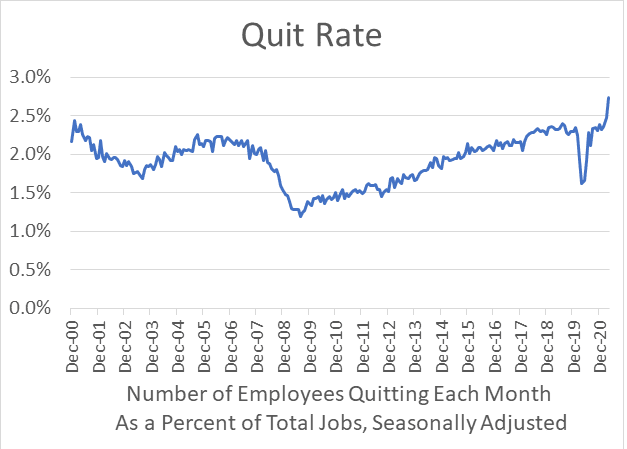Americans are more enthusiastic about the job market than they have been at any time in the past half century.
And yet the official unemployment rate is well above what it was during comparable times in the past.
The Conference Board, as part of its Consumer Confidence study, each month asks people what they think of the current job picture, giving a choice of three possible answers: jobs are plentiful, not so plentiful or hard to get.
One way to assess the outlook is to subtract the number who think jobs are hard to get from those who think they are plentiful. The preliminary figure for June, released Tuesday, shows a margin of 43.5 percentage points. That figure has been over 40 percentage points in only nine prior months that the question was asked, dating back to 1968. All of them were during 1999 and 2000, when the great 1990’s boom was ending.
And yet the official unemployment rate was 5.8% in May, the latest figure available. That is well above the rates of 3.8% to 4.1% during the peak period for enthusiasm in 1999-2000.
That fact may help to explain why there seems to be more optimism about the future of the job market than is normally the case when current conditions seem so good. Another question the board asks is whether respondents expect there to be more jobs six months later. The proportion who expected that to be the case in June was 25.7%, well above any level seen during other months when people were this enthusiastic about current job conditions.
That enthusiasm seems to be justified by some indicators. The Labor Department report on job openings shows there were more than 9 million unfilled openings in April, the latest figure available, equal to 6.4% of current jobs. Both figures are higher than at any time since that survey began, at the end of 2000. It also showed more people were quitting their jobs – a sign of optimism that better jobs are available – than at any time in the past.

Sources: Conference Board, Bureau of Labor Statistics

Source: Bureau of Labor Statistics

Source: Bureau of Labor Statistics